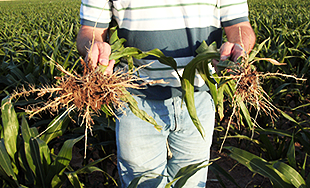
 Cation Exchange Capacity (CEC) is a tool that provides a soil texture indicator to help determine the amount of nitrogen your soil can hold without leaching.
Cation Exchange Capacity (CEC) is a tool that provides a soil texture indicator to help determine the amount of nitrogen your soil can hold without leaching.
A lower CEC indicates a sandy or coarse textured soil, while a higher number indicates a finer textured, more dense soil. The rule of thumb is to multiply the CEC by 10 to obtain a good estimate of the number of pounds of N per acre the soil can store. For example, a CEC of 12 would indicate that the soil could hold about 120 pounds of N at a given time.
But a simple one-inch rain can change things dramatically as CEC changes. One inch of rain on a soil with a CEC of 18 will move nitrates about one to four inches down into the soil profile. But that same rain on a CEC 10 soil moves nitrogen down one foot!
It's easy to see that loading up on N in one application can be a disaster both economically and environmentally— especially if your soil is simply not capable of storing high volumes of N. By using CEC, you can make better decisions as to what type of fertilizer you should use, how much you should apply, and when you should apply it. This is clearly another strong argument for split applications of Kugler KQ fertilizers.